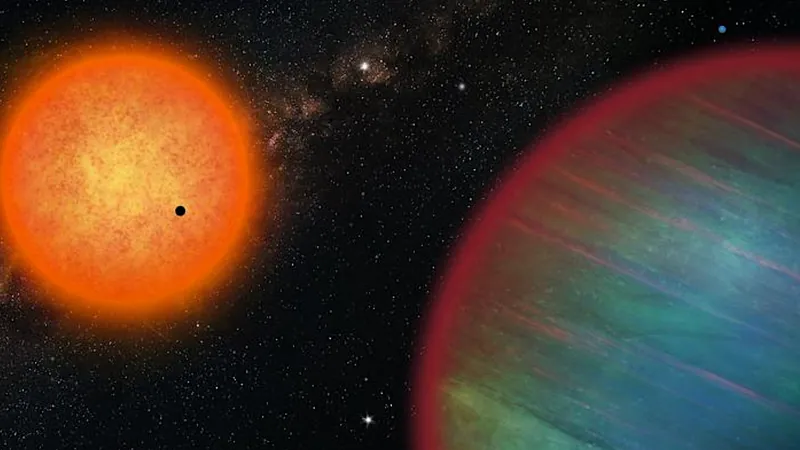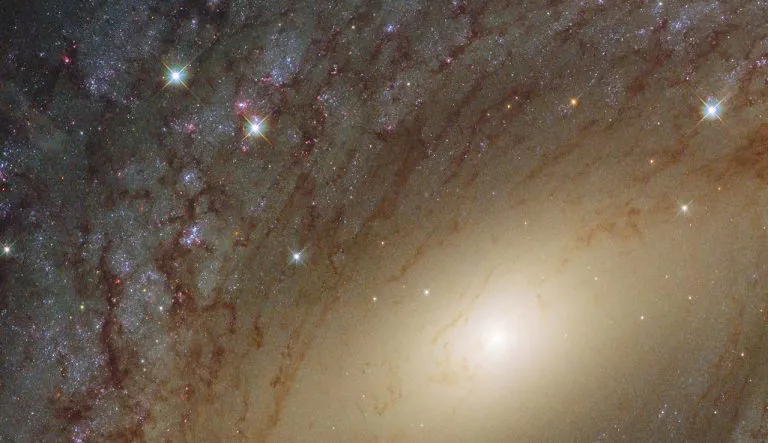
Groundbreaking Discovery of Two Exoplanets Challenges Planetary Formation Theories
2025-01-20
Author: Noah
Groundbreaking Discovery of Two Exoplanets Challenges Planetary Formation Theories
In an astonishing breakthrough, astronomers from The University of Warwick and the University of Geneva have uncovered two new planets beyond our solar system, providing fresh insights into the formation of planetary systems. Nestled within the WASP-132 system, these discoveries—a super-Earth and a distant icy giant—are fundamentally redefining the established notions surrounding ‘hot Jupiter’ formations.
Hot Jupiters are massive gas giants, akin in mass to our own Jupiter, but they orbit perilously close to their stars, even closer than Mercury's orbit around the Sun. Traditionally, scientific consensus holds that these planets could not form in their observed orbits due to a lack of necessary gas and dust, theorizing instead that they originate farther out in their systems, migrating inwards over time.
Historically, it was believed that hot Jupiters exclusively occupy their orbit without any accompanying planets, as their inward migration would typically displace or eject other nearby bodies. However, the recent monitoring of the WASP-132 system has revealed the presence of not one, but two additional exoplanets—a revelation that disrupts this long-standing theory.
David Armstrong, an Associate Professor of Physics at The University of Warwick, expressed excitement about the discovery, particularly emphasizing the rarity of finding an inner super-Earth located beneath a hot Jupiter. Through rigorous observation techniques and advanced instruments, the team characterized the mass, density, and composition of this intriguing new world, concluding that it has a density akin to that of Earth.
This finding complicates our understanding of planetary dynamics, implying that the migration of the hot Jupiter does not destabilize the orbits of the super-Earth and the icy giant, indicating a potentially more stable migration path within the surrounding proto-planetary disk of the young star.
François Bouchy, an Associate Professor at UNIGE, described the WASP-132 system as a "remarkable laboratory" for studying the formation and evolution of multi-planetary systems. He noted, "The discovery of a hot Jupiter alongside an inner super-Earth and a distant giant calls into question our understanding of the formation and evolution of these systems. This is the first time we have observed such a configuration."
The orbiting dynamics of these newly discovered planets further illustrate their unique characteristics: the hot Jupiter completes an orbit in just seven days and three hours, while the super-Earth, with a mass six times greater than Earth's, orbits in a swift 24 hours and 17 minutes. In stark contrast, the icy giant—a planet five times as massive as Jupiter—takes a lengthy five years to circle its star. Through their extensive measurements, researchers determined the super-Earth's composition primarily consists of metals and silicates, mirroring Earth's geological structure.
Ongoing observations of the WASP-132 system are being enhanced by the European Space Agency’s Gaia satellite, in operation since 2014, which meticulously tracks subtle variations in star positions to identify potential planetary companions and remote brown dwarfs.
This exciting discovery not only enriches our understanding of planetary systems but also invites us to rethink what we know about the complex processes that shape them. With each new planet uncovered, we edge closer to unlocking the mysteries of the cosmos. Stay tuned—who knows what other secrets our universe holds?









 Brasil (PT)
Brasil (PT)
 Canada (EN)
Canada (EN)
 Chile (ES)
Chile (ES)
 Česko (CS)
Česko (CS)
 대한민국 (KO)
대한민국 (KO)
 España (ES)
España (ES)
 France (FR)
France (FR)
 Hong Kong (EN)
Hong Kong (EN)
 Italia (IT)
Italia (IT)
 日本 (JA)
日本 (JA)
 Magyarország (HU)
Magyarország (HU)
 Norge (NO)
Norge (NO)
 Polska (PL)
Polska (PL)
 Schweiz (DE)
Schweiz (DE)
 Singapore (EN)
Singapore (EN)
 Sverige (SV)
Sverige (SV)
 Suomi (FI)
Suomi (FI)
 Türkiye (TR)
Türkiye (TR)
 الإمارات العربية المتحدة (AR)
الإمارات العربية المتحدة (AR)